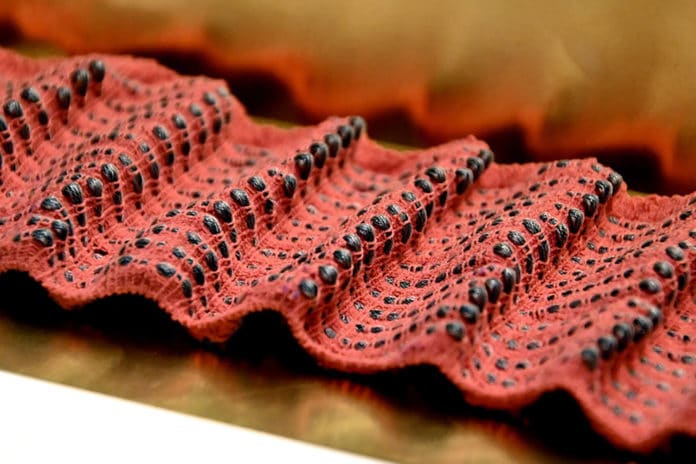MIT and Sweden scientists have developed a new kind of fiber called OmniFibers, that when used in garments, can sense how much it is being stretched or compressed. It then gives tactile feedback in the form of pressure, lateral stretch, or vibration.
The fluid channel within the center of the fiber controls the fibers’ geometry. It pressurizes and releases a fluid medium, such as compressed air or water, into the channel. This allows the fiber to act as artificial muscle.
Thanks to stretchable sensors, the fibers detect and measure the degree of stretching of the fibers. Its outer layer is made of a material like common polyester, it is compatible with human skin.
The fiber architecture has several features:
- Extremely narrow size.
- Easy to structure into a variety of fabrics.
- Fast response time and strength.
- A variety of the forces it can impart allow for a rapid feedback system for training or remote communications using haptics.
Scientists noted that fabrics made of these fibers could help train singers or athletes to control their breathing better or help patients recovering from disease or surgery recover their breathing patterns.
Scientists tested the system by making a type of undergarment that singers can wear to monitor and playback the movement of respiratory muscles, to later provide kinesthetic feedback through the same garment to encourage optimal posture and breathing patterns for the desired vocal performance.
Scientists had the singer perform while wearing the garment. They recorded the movement data from the strain sensors woven into the garment. The data is then translated to the corresponding tactile feedback.
Ozgun Kilic Afsar, a visiting doctoral student and research affiliate at MIT, said, “We eventually were able to achieve both the sensing and the modes of actuation that we wanted in the textile, to record and replay the complex movements that we could capture from an expert singer’s physiology and transpose it to a nonsinger, a novice learner’s body. So, we are not just capturing this knowledge from an expert, but we can haptically transfer that to someone who is just learning.”
“Through this initial testing is in the context of vocal pedagogy, the same approach could be used to help athletes to learn how best to control their breathing in a given situation, based on monitoring accomplished athletes as they carry out various activities and stimulating the muscle groups that are in action.”
“Eventually, the hope is that such garments could also be used to help patients regain healthy breathing patterns after major surgery or a respiratory disease such as Covid-19, or even as an alternative treatment for sleep apnea (which Afsar suffered from as a child.”
This soft fiber composite is made of five layers: the innermost fluid channel, a silicone-based elastomeric tube to contain the working fluid, a soft stretchable sensor that detects strain as a change in electrical resistance, a braided polymer stretchable outer mesh that controls the external dimensions of the fiber, and a nonstretchy filament that provides a mechanical constraint on the overall extensibility.
Afsar said, “The physiology of breathing is quite complex. We are not quite aware of which muscles we use and what the physiology of breathing consists of. So, the garments designed have separate modules to monitor different muscle groups as the wearer breathes in and out, and can replay the individual motions to stimulate the activation of each muscle group.”
The system also might be useful for training other kinds of muscle movements besides breathing.
Journal Reference:
- Ozgun Kilic Afsar et al. OmniFiber: Integrated Fluidic Fiber Actuators for Weaving Movement-based Interactions into the ‘Fabric of Everyday Life. DOI: 10.1145/3472749.3474802
